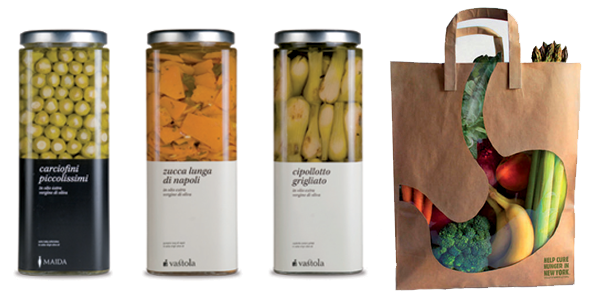We eat what we want to be
With Expo over, the voices remain of those who discussed food, distribution and consumption. These include those of the experts that ACIMGA brought together in a conference on the second to last day of Expo, in order to foster reflections on the phenomena that are changing the face of food products – and their packaging. E.P.

In the postmodern consumer revolution, food’s identity has changed from “mere” eating to a cultural projection with a heavy aspirational component. And so Feuerbach’s theory that “we are what we eat” is transformed into today’s “we eat what we want to be”, generating an explosion of new phenomena that directly affect the ways and channels of buying – and packaging, of course. Packaging is charged with the task of channeling the product image, with its story and values, but it takes on new functions now that people’s way of buying groceries is changing, when we enter a supermarket in a hurry, already knowing what we want to buy: the food and its packaging must no longer win us over but let us discover them by revealing new value.
This is the scenario addressed at the conference “Food Stories: the New Frontiers of Food”, organized by ACIMGA on 28 October at Expo 2015, with the participation of experts and concerns that use and produce packaging “proactively”. The event proved a valuable platform for clarifying aspects and functions of food products of “the world of tomorrow” (that are happening today) and their packaging.
 The increasingly active consumer
The increasingly active consumer
Today’s consumer is individualized and active: no longer the target of advertising strategies but a subject who, with their choices, confers value to the product (be it playful, ethical, functional, aesthetic… even political). The packaging, it’s worth saying, “is put in the middle”. Already the product’s voice and megaphone, it becomes these for the consumer as well, radicalizing its role as medium, mediating and channeling the reciprocal and interactive relationship. For this reason, Carlo Carnevale Maffè can declare that packaging doesn’t just recount a product’s stories, traditions, ingredients, diets, recipes, etc... but it is also capable of transferring to the food industry crucial information on the choices and behaviors of its customers, a fragmented mass of countless variants of taste and ideas ((«Just try and make the same pasta for twelve guests!»). These consumers also ask more and more that the product and therefore also its packaging “do the right thing” by helping fight waste, improving converting processes, reducing post-consumption waste and much more.
 Experience is (nearly) everything
Experience is (nearly) everything
According to Carlo Meo, the rise of new social functions for food also shows in the lost central role of retail stories to the benefit of multi-channels, with the recovery of traditional POPs (markets and open air markets) and the rise of new channels (e-commerce, group purchases, “eat & pay” food service…). These phenomena – Meo stresses – have in common a rejection of the logic of mass consumption and fragmented purchase (I buy what I will eat now, without stocking up more), in the spirit of an increasingly extreme individualism that, all things considered, is not very committed. This is demonstrated by the affirmation of mass attention to food: a simple pleasure accessible to all («much simpler than sex and many other things», Meo notes) and at the same time rich with sensory stimuli, stories of ingredient origins, of local and distant traditions, of opportunities for sharing in and outside the home…
The examples used by Meo on transforming food from a commodity into a story and a value are illuminating: consumption of the extremely poisonous fugu in Japan, snacks made from insects at Expo 2015, ice cubes shaped like the Statue of Liberty, Batman or Godzilla, Suntory whiskey, but also the fashion show by Karl Lagerfeld put on in a brasserie, which identifies and reaffirms the link between two worlds concretely so distant but culturally so close: fashion and food service.
Same thing, different product. The new meanings of food and consumption, also according to Meo, can be seen in the way producers have chosen to offer products originally associated with poverty that have been embellished by “stories” that appeal to the new consumers: offal is no longer a byproduct but a gourmet street food, beer is no longer a coarse and vulgar drink but a gift item for hipsters, and gorgonzola from a leftover in grandma’s fridge is transformed into a delicacy for connoisseurs…
Packaging interprets, contributes to and responds, as shown by the list of containers above, characterized by high levels of service, play and seduction.
RELATED ARTICLES: "The consumer revolution as interpreted by…"
|
LA COMMUNITY AND THE FUTURE OF FOOD PACKAGING Combining culture and business. The event also served as a chance to meet with buyers and institutions from important markets, starting with the Mediterranean. Thanks to a collaboration between ICE-Agenzia and the Ministry of Economic Development, representatives both from the federation of food industries and Morocco’s largest meat processer (Koutoubia group) were on stage. The audience included over twenty buyers from Tunisia, Algeria, Morocco, Egypt, Israel and Turkey, who had a chance to visit Italian converting machine builders (next year, Briganti tells us, the focus will be on the USA). Consumer experience and service drive profit. The Milan event, organized in partnership with European House Ambrosetti and with the support of sponsors (Cerutti, Omet, Uteco, Emerson), was divided into two sessions introduced and coordinated by Carlo Alberto Carnevale (Strategic Management Dept. Bocconi University School of Management) and Carlo Meo (CEO of Marketing and Trade, a consulting firm specialized in consumer habits and retail design). |

















